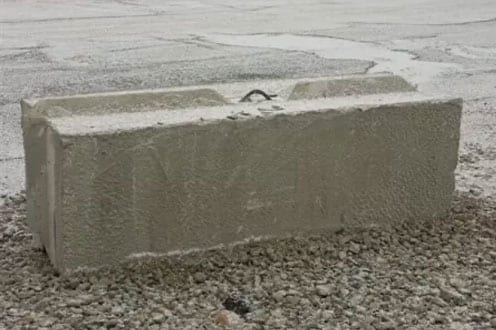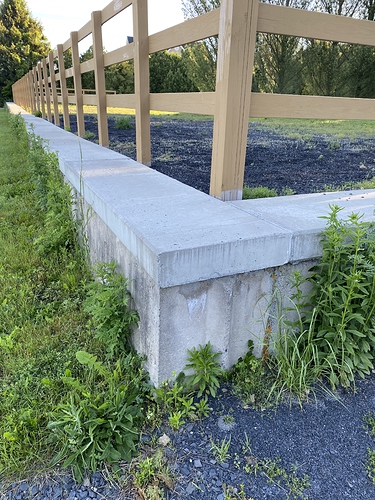I’m thinking of revamping my dry lot area / want to make it more level so that the stone dust surface doesn’t constantly wash out / have big ruts etc. due to the torrential rains we are typically having in NYS now.
In order to build up the down slope area (about an 80’ stretch) my contractor recommended using those large concrete bin blocks (one course high) as a retaining wall to hold back the fill — and then re-fence on the high side.
The blocks would work well (last forever, never fail) but one of my pastures is directly on the other side (down slope) which means my horses have the potential to either break a leg if they accidentally kick one of these blocks while playing around, 0r scrape themselves up (break a tooth?) because these blocks are pretty rugged. No attractive affordable solution to pad them up that I can think of. Planting a row of bushes in front of the blocks won’t work either = deer food or toxic to horses.
A second fence in front of the blocks seems like the only option. But all that double fence!
Maybe the horses will be fine, will ignore / stay away from the blocks and I’m worrying for nothing. WWYD?


 ) and I’ve created a little dam of sorts on the edges of the paddocks where water flows. It doesn’t hold the water in, which is not my intention, but it does disperse the water on the way out, so that it doesn’t cause as many washouts. Other than when we have torrential rains like last week, it actually works really well.
) and I’ve created a little dam of sorts on the edges of the paddocks where water flows. It doesn’t hold the water in, which is not my intention, but it does disperse the water on the way out, so that it doesn’t cause as many washouts. Other than when we have torrential rains like last week, it actually works really well.
